|
Responses to incidents such as fires and floods typically require organization and coordination in order to be successfully incorporated into the incident's organizational structure. Responders need to be properly equipped, carry personal protective equipment (PPE) appropriate for the type of emergency, and understand how and where they fit in the emergency's Incident Action Plan.
Responses to flood evacuation requests should be organized similar to responses to fires (see Fire Evacuation Responses, however some additional issues relating to floods appear below.
- Flash floods in particular can undermine roads and create serious hazards that are often hidden by the water.
- Flash floods can move swiftly, carrying heavy objects that can strike rescuers, sweep rescuers off their feet and even wash vehicles off roadways.
- Flooding conditions over certain types of soils can create treacherous bogs.
- Downed power lines in floods can cause significant electrical hazards.
- Objects hidden under water can snag rescuers and animals.
- Vehicle traction may be poor in flooded areas. Trailers should carry half the loads normally carried on solid pavement to avoid getting stuck.
- Water can be contaminated by septic systems, chemicals stored in flooded sheds, fertilizers and animal waste.
- Animals and rescuers should be decontaminated after leaving the flooded area.
- Vehicles should be inspected thoroughly after working in flooded areas.
A variety of animal species may be encountered that shouldn't share the same trailer.
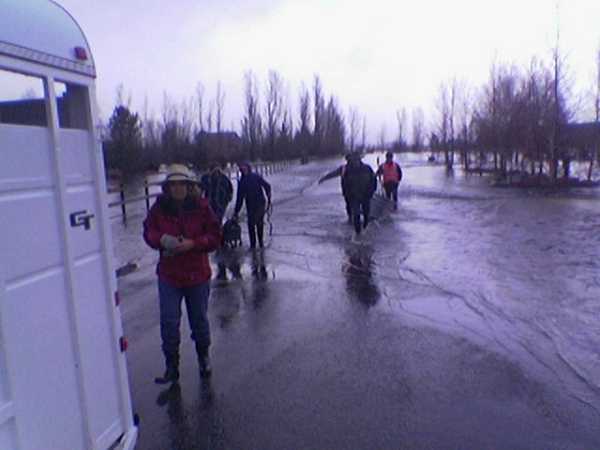
Roads can be particularly treacherous at night when covered with water.
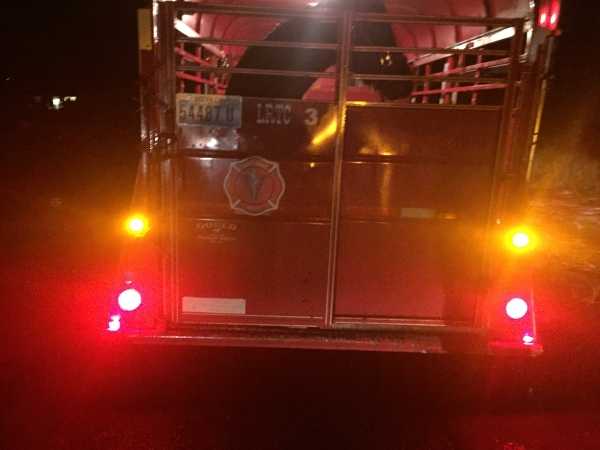
Moving water can sweep an evacuation team off course.
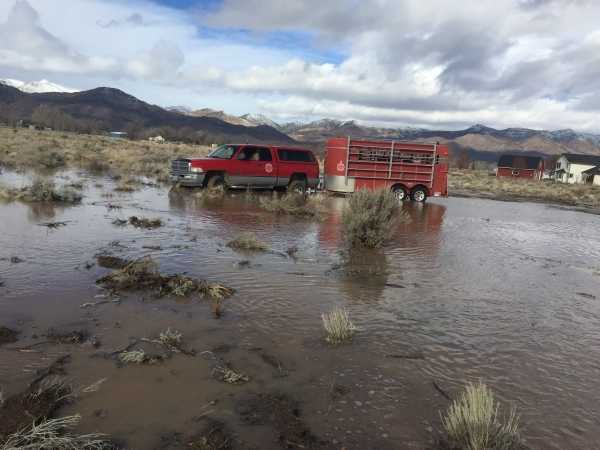
Wheel bearing service is necessary after working in high water.
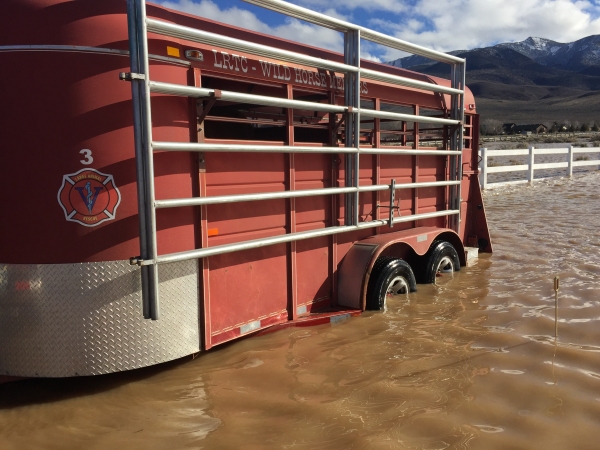
One advantage of floods over fires is that if nearby high ground can be identified that will be safe from flood waters, responders can often help coordinate peer-to-peer sheltering options where animals can be moved to nearby high ground and not have to leave the neighborhood. Panels can be moved from low-lying areas to make temporary corrals.
There still needs to be consideration given to water level forecasts and the impacts of water on access and egress roadways. The team still needs to get out of the impacted area and supplies for animals and people sheltered in the immediate area, including uncontaminated water, still need to get in.
Another critical issue involves volunteer responder rehab. Exposure to wet and cold can be problematic and walking / wading through water and mud can be exhausting. Response plans for all but the simplest incidents should include a designated Safety Officer and a rehab plan.
The Central Lyon County Fire District providing a rehab unit for SAR and animal evac volunteers.
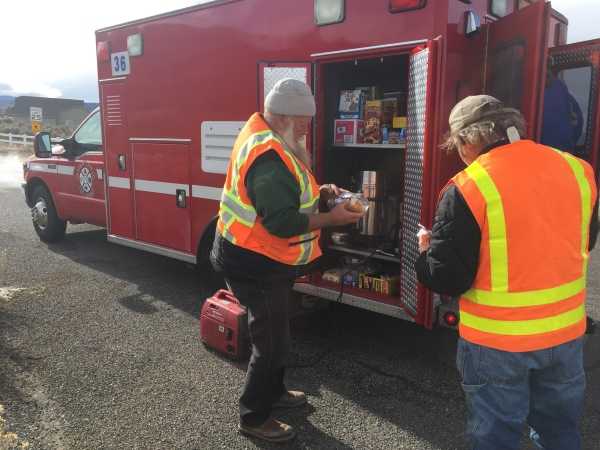
Finally, flood waters can contain all kinds of chemicals and biological hazards. Consideration must be given to decontaminating (thoroughly rinsing off) those areas on animals and people that have come in contact with flood waters.
Detailed information relating to these types of responses can be found in the document,
Developing an Effective Regional
Large Animal Evacuation Program.
Additional information about flood related issues can be found in the document,
Are You Ready for the Flood?
| 







